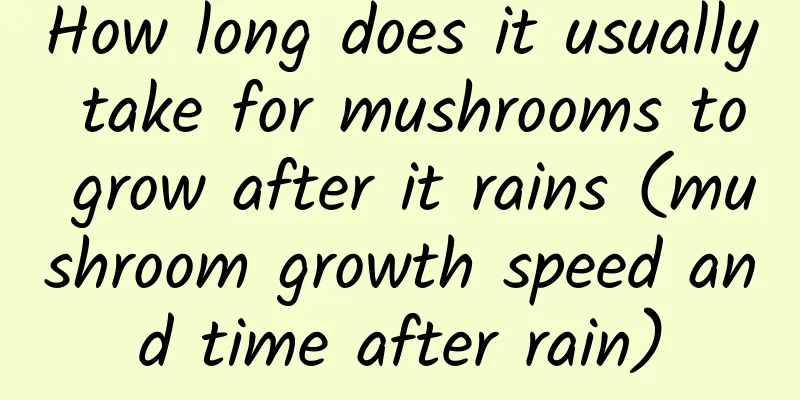When is the best time to plant tomatoes?

|
Tomato is a widely grown and consumed fruit and vegetable. It is rich in vitamin C, potassium, folic acid, vitamin K, dietary fiber, and the antioxidant lycopene. It has strong adaptability to soil, prefers warm climates, and is not frost-resistant. The suitable temperature for growth is generally 20-30℃. Too high or too low temperature will affect its growth and fruit quality. So when is the best time to plant tomatoes? When is the best time to plant tomatoes? Northern regions: Open-air sowing is usually carried out in mid-April to early May in spring, while seedlings can be raised in March to April under protected conditions such as greenhouses or sheds . Southern region: Due to the warmer climate, sowing can be carried out from the end of February to mid-March. In some frost-free areas, sowing can even be done in the fall. Tomato Growing Conditions 1. Soil conditions Tomatoes are highly adaptable to soil and can grow in a variety of soils. But to get a good yield, it is best to choose deep, fertile, well-drained soil rich in organic matter. Tomatoes grow best in neutral or slightly acidic soil. It should be noted that tomatoes should not be planted continuously to avoid soil-borne diseases and poor root development. 2. Temperature requirements Tomatoes prefer a warm environment and require higher temperatures for their growth and fruit development. The suitable temperature for seed germination is 25-30℃, the growth temperature is 15-30℃, and the optimum temperature is 20-28℃. Temperatures that are too low will slow growth and affect flowering and fruiting, while temperatures that are too high may result in stunted growth and reduced fruit quality. 3. Lighting requirements Tomato is a light-loving crop, and sufficient light helps its growth and fruit coloring. Different growth stages have slightly different light requirements, but in general, adequate sunlight is the key to obtaining high-quality tomatoes. 4. Water Management Tomatoes require more water, especially during the fruit development stage. However, too much water can lead to root problems and disease. Therefore, reasonable irrigation and drainage are important factors to ensure the healthy growth of tomatoes. 5. Nutritional requirements Tomato is a fertilizer-loving crop and requires sufficient nutrients to support its growth and fruit development. The rational application of organic fertilizers and compound fertilizers , as well as the supplementation of trace elements such as calcium, magnesium and boron, are crucial to improving tomato yield and quality. At the same time, be careful to avoid excessive fertilization to prevent the plant from growing too tall or causing nutritional imbalance. In summary, tomato is a crop that likes warmth and sufficient sunlight. The planting time varies slightly in different parts of my country, mainly depending on the local climatic conditions.
|
<<: When is the best time to plant asparagus?
>>: When is the best time to plant cabbage?
Recommend
How to prune red cicada flowers after they bloom
Pruning after flowering After the red cicada bloo...
Common varieties of grapefruit
Pomelo The ripening time of Shatian pomelo is gen...
What to do if the pitcher plant cage withers
Normal withering Generally, the pitcher plant cag...
What to do if the orange tree leaves turn yellow
1. Reasonable watering The yellowing of orange tr...
How to prune the roots of Elm
Does the elm need root pruning? Elm needs to have...
Is the green radish suitable for sun or shade?
Does green radish prefer shade or sun? The green ...
Do these two little tricks for the "coin grass", new leaves will keep growing, and the pot will be full in January
No matter what kind of plant it is, it will alway...
What fertilizer is good for foliage plants? What fertilizer is mainly used for foliage plants?
When we grow flowers at home, we plant them in po...
Does Zephyranthes prefer shade or sun?
Does Zephyranthes prefer shade or sun? Zephyranth...
The difference between Tongquancao and Lobelia
1. Differences in plants The length of the herb i...
How often should I water the iron begonia?
How often should I water the iron begonia? Spring...
How to maintain golden grass so that it can bloom
Golden grass growing conditions Golden grass like...
Crape Myrtle Tree Price, Crape Myrtle Tree Pictures
1. Price of Crape Myrtle Tree The price of the cr...
What does a coconut tree look like and how to distinguish it from a palm tree?
1. Morphological characteristics Coconut tree is ...
How to propagate oleander by cuttings
Time for cuttings Cuttings can be taken in both s...









